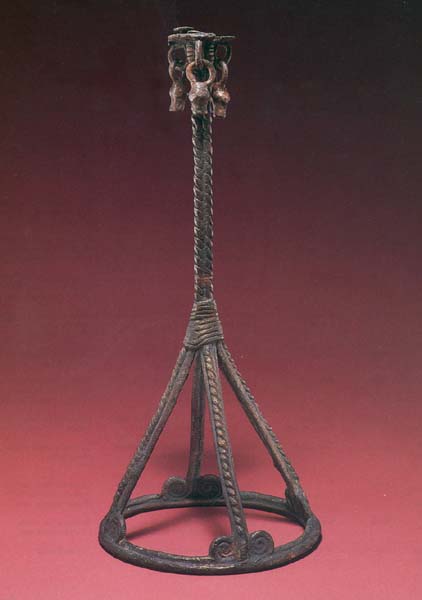Image Details

Nahum Slapak, courtesy of the Israel Museum, Jerusalem
Burning incense in a bowl set on top of a stand such as this one was a common ritual practice in the ancient Near East. Similar to examples from Ugarit (Ras Shamra), Beth-Shean and Megiddo, this bronze incense burner, as well as two bronze scepters, were found in an unrobbed grave at Tel Nami, a site on the Mediterranean coast, about eight miles south of Haifa. Ornaments fashioned in the form of pomegranates, or of poppy seed pods, dangle from the top of the stand. Both plants symbolized bounty because they have an abundance of seeds.
Tel Nami supported at least two settlements, one in the first half of the second millennium B.C.E., and the other from about the 14th century B.C.E. to about 1200 B.C.E. The later settlement used part of the site of the earlier settlement as a cemetery, where recent excavations have uncovered these extraordinary implements once used in cultic rituals.
